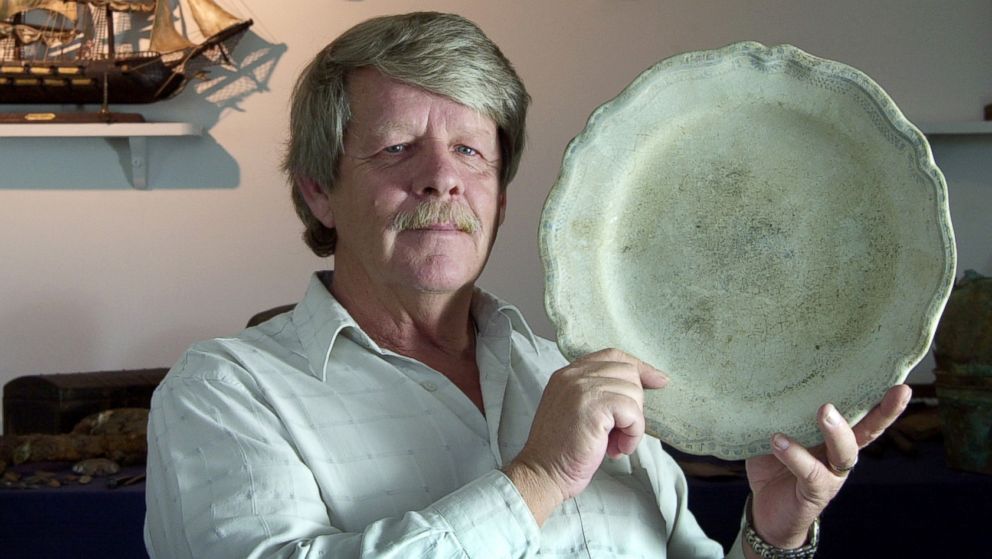$3B Sunken Treasure? Questions Over Whether Hunt For WWII Bullion Is Fishy or Legit
Questions over whether an $8 million salvage operation is fishy or legit.

April 16, 2014 -- Are platinum ingots worth $3 billion sitting on the ocean floor, 50 miles northeast of Cape Cod?
The United Kingdom--owners of a torpedoed WWII freighter said to have been carrying that cargo (plus jewels, gold and silver)--would like to know. So, too, would a group of U.S. investors who have sunk $8 million so far into the salvage effort, without having much to show for it.
The Maine Office of Securities this week announced it will be seeking information from Maine residents who invested in—or were approached about investing in—Sea Hunters, L.P., and two other companies associated with Greg Brooks, the treasure hunter trying to salvage the freighter, the S.S. Port Nicholson.
It’s not that Brooks has recovered nothing.
British ship yields sunken treasure
An inventory of retrieved items Sea Hunters filed with the U.S. District Court in Portland includes a broken compass, a fire extinguisher and a brick.
Portland attorney Michael Kaplan, representing the United Kingdom’s interest in the freighter, describes the list to date as pitiful. “They left a few things off,” he dryly told the Bangor Daily News, “like jewels, gold, platinum and silver.”
Kaplan, and his colleague, Timothy Shusta of Tampa, told ABC News they believe nothing of value is left to be recovered from the wreck. The reason, they say, is that the original “Lloyd’s List” manifest for the ship says it was carrying only military stores.
Sea Hunters, however, contends in court filings that the ship was carrying 71 tons of platinum ingots.
By way of refutation, Kaplan cites U.S. Geological Survey yearbooks from the 1940s documenting world mineral production. In the years leading up to WWII, he says, total world production of platinum averaged 15.5 tons a year. It is not plausible, he says, that the freighter was carrying anything like 71 tons.
Nonetheless, Kaplan and his colleague are keeping an eye on the situation, in part for what they call PR reasons: What if a treasure really is down there? The British public, they say, would be outraged if the British government was not taking steps to protect its claim to ownership of the wreck.
Brooks says he has been working on and off for years on his salvage effort, with long delays he attributed in the local press to bad weather and faulty or insufficient equipment. His investors, meantime, have grown restive.
An investigation of Brooks’ operation by the Portland Press Herald in 2013 said that Brooks, who has worked as a treasure-hunter for three decades, has never found treasure. The story quoted a variety of salvage experts and marine archaeologists expressing doubt that his attempt to recover treasure from the Port Nicholson was anything more than an exercise in money-raising.
Sunken battleship found after 264 years
Robert Marx, an underwater archaeologist who has written 64 books on treasure hunting, told the newspaper that in a business rife with less-than-reputable hunters, Brooks stood out: “We have a saying in this business,” he said. “If someone is trying to pull the wool over an investor, we say, ‘Are you doing a Greg Brooks?’”
Contacted by ABC News, Marx said he expects nothing of value to be recovered from the Nicholson. “I’ll stake my reputation on it,” he said, citing Lloyds’ records and a previous salvage effort that turned up nothing. As for Brooks’ claim to have found a treasure, Marx told ABC, “I don’t believe he has it, and nobody else believes him, either.”
ABC News asked Brooks and his attorney, Thimi R. Mini, to comment on the assertion that the the ship had carried no treasure, and that the salvage effort was just a money-raising scheme. They declined.




